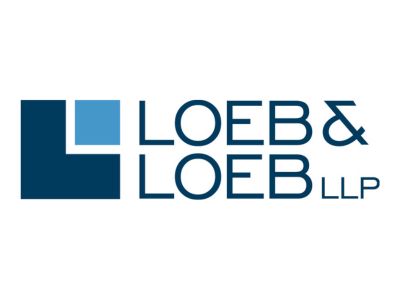A recent opinion by the US Supreme Court (“SCOTUS”), held that “when an alleged infringer uses a trademark as a designation of source for the infringer’s own goods, the Rogers test does not apply” and remanded the issue of trademark infringement back to the lower court, as well as the dilution claim given that the Ninth Circuit misread Section 1125 of the Lanham Act.[1]
However, the Rogers[2] test, which was designed in the Second Circuit to protect First Amendment interests in the trademark context, was not abolished and SCOTUS took no position on it, nor in resolving the long-standing split between the Second and Ninth circuits that has, for years, given plaintiffs pause in determining a favorable venue.
This case began with Jack Daniel’s Properties, Inc. (“Jack Daniel’s”) demanding that VIP Products LLC (“VIP”) stop selling its dog toy designed to look like a bottle of Jack Daniel’s whiskey, and marketed under the name, “Bad Spaniels.”

In response, VIP filed a declaratory judgment action asking the court to declare that the toy neither infringed nor diluted Jack Daniel’s trademarks. Jack Daniel’s counterclaimed for trademark infringement and dilution. VIP argued that the infringement claim failed under the Rogers test, and that the dilution claim “could not succeed because Bad Spaniels was a parody of Jack Daniel’s and therefore made “fair use” of its famous marks. §1125(c)(3)(A)(ii).”
Justice Kagan writes, “The District Court had rightly concluded that because VIP used the challenged marks as source identifiers, it could not benefit from the fair-use exclusion for parody. See App. to Pet. for Cert. 105a; supra, at 8–9, 17–18. The Ninth Circuit took no issue with that ruling. But it shielded VIP’s parodic uses anyway. In doing so, the court negated Congress’s judgment about when—and when not—parody is excluded from dilution liability.”
In Justice Gorsuch’s concurring opinion, he cautioned, “I write separately only to underscore that lower courts should handle Rogers v. Grimaldi, 875 F. 2d 994 (CA2 1989), with care.” However, the concurring Justices even acknowledge their own confusion on the issue by stating, “it is not entirely clear where the Rogers test comes from—is it commanded by the First Amendment, or is it merely gloss on the Lanham Act, perhaps inspired by constitutional-avoidance doctrine?”
It goes without saying that this issue is not for the faint of heart, however, analysis into the case law that applies (or doesn’t apply) Rogers, while considering inter alia various circuits, specific facts of each case and what kinds of expressive works are at issue, can shed some guidance.
In most cases, the Second Circuit will first look to likelihood of confusion and if found, will determine whether it is of a sufficiently compelling level to outweigh First Amendment concerns identified by Rogers. The question of likelihood of confusion is generally separate from the Rogers test in the Ninth Circuit. The Supreme Court’s reasoning in the Jack Daniel’s case is consistent with the Ninth Circuit’s focus in its prior rulings on whether a defendant’s actions had caused any risk of confusion, rather than simply whether there was a likelihood of confusion not caused by anything other than mere use of the mark. Here, as the SCOTUS decision points out, VIP “conceded that it used the Bad Spaniels trademark and trade dress as source identifiers.”
It appears, that the Ninth Circuit will continue to require affirmative statements or actions meant to explicitly mislead consumers to overcome Rogers’s second prong in cases involving marks used as elements of creative works where consumers do not expect them to designate source. But, in those limited situations where consumers do expect a mark in a creative work to be an indicator of source, the determination of whether the use is explicitly misleading will turn on whether the mark is used for a directly competing product as well as the extent to which the junior user added its own expressive content or simply adopted the senior user’s mark as the centerpiece of its work.
The next case that may continue to shape the Rogers landscape is Diece-Lisa Indus. Inc. v. Disney Store USA LLC, U.S., No. 22-347. It is unlikely that the Jack Daniel’s limited decision will have much bearing on the case, but it may continue to provide additional guidance on the balance between the First Amendment and the Lanham Act.
—
[1] As for dilution, the Court found that the Ninth Circuit had misread Section 1125 of the Lanham Act and its enumerated exclusions from dilution liability. Specifically, the Ninth Circuit erred in holding that the “noncommercial use” exclusion in Section 1125(c)(3)(C) applied to parodies or other humorous commentary. Instead, parodies fall within the “fair use” exclusion in Section 1125(c)(3)(A), but only if the mark is not being used “as a designation of source for the person’s own goods or services.” “In that event, no parody, criticism, or commentary will rescue the alleged dilutor.” The Court held that “the noncommercial exclusion does not shield parody or other commentary when its use of a mark is … source-identifying,” and, as with the infringement claim, remanded the dilution claim for further proceedings.
[2] Rogers v. Grimaldi, 875 F. 2d 994 (2d Cir. 1989).
Case: Jack Daniel’s Properties, Inc. v. VIP Products LLC, No. 22-148 (U.S.)
You may also like…
Clarivate announces the development of IPfolio Law
Clarivate, a leading global provider of transformative intelligence, today announced the development of IPfolio Law,...
The EUIPO launches the Copyright Knowledge Centre for guidance amid rise of generative AI
The Centre aims to help creators and rights holders navigate copyright in today's technological landscape The EUIPO is...
Trademarking the dupe economy: what LULULEMON DUPE signals for the future of enforcement
The dupe culture, particularly in the fashion market, is here to stay. The less expensive versions of luxury garments...
Contact us to write for out Newsletter















